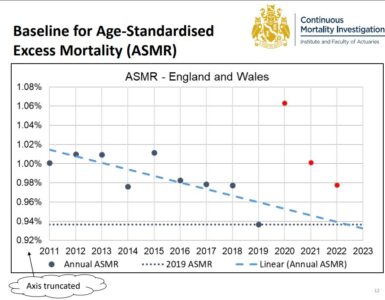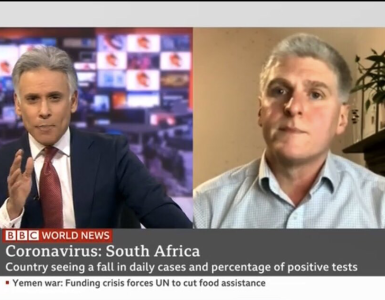Mortality Rates Tell True Tale of Coronavirus’s Effect
In April, Stuart spoke to the Wall Street Journal (WSJ) on excess deaths and the extent to which COVID-19 is killing those who weren’t already near the end of life.
Excess Deaths
Governments considering reopening economies frozen by restrictions to limit the spread of the new coronavirus are struggling to determine how deadly it is. With tests still in short supply, analysts are looking to the blunter measure of total deaths.
By comparing mortality statistics this year with those from the same period in past years, a rough measure of the pandemic’s impact emerges. In parts of the U.S. and Europe that have been hit hard, weekly fatalities from all causes are up by more than 25%. In some places almost 80%.
How quickly authorities release death statistics varies widely. Only a few countries and localities allow near-real-time analysis. Total-mortality numbers from those places provide a rough indicator that will sharpen as more data are released.
Overall mortality figures are still more exact than tallies of coronavirus cases or deaths and less prone to local variation, say actuaries and epidemiologists. Rates of testing for infection vary widely, even within countries. Many reported deaths from Covid-19, the disease caused by the coronavirus, aren’t medically confirmed by postmortem testing.
“People have realized that with all the differences in testing, looking at all causes of death is a much better proxy for the impact of Covid,” said Lasse S. Vestergaard.
UK Data
Analysis of British hospital data indicates that accelerated deaths are just a fraction of fatalities. Stuart McDonald, an actuary at insurer Scottish Widows studied reports from U.K. intensive care units. These showed only 7% of deaths linked to coronavirus were among people who already suffered from seriously debilitating ailments. The other 93% were able to live without any intervention before falling ill.
His analysis of the data for patients admitted to intensive care units with other serious ailments, is that the mortality rate linked to coronavirus was 10 times greater than would have been expected without the virus.
Normally, the life expectancy of a British 60-year-old is 26 years. Only 1-in-20 80-
year-olds would be expected to die in the next year, he said.
“We shouldn’t be writing off these deaths at older age as inevitable,” Mr. McDonald said. “A lot of those people have many years to live.”
https://www.wsj.com/articles/mortality-rates-tell-true-tale-of-coronaviruss-effect-11587558540















